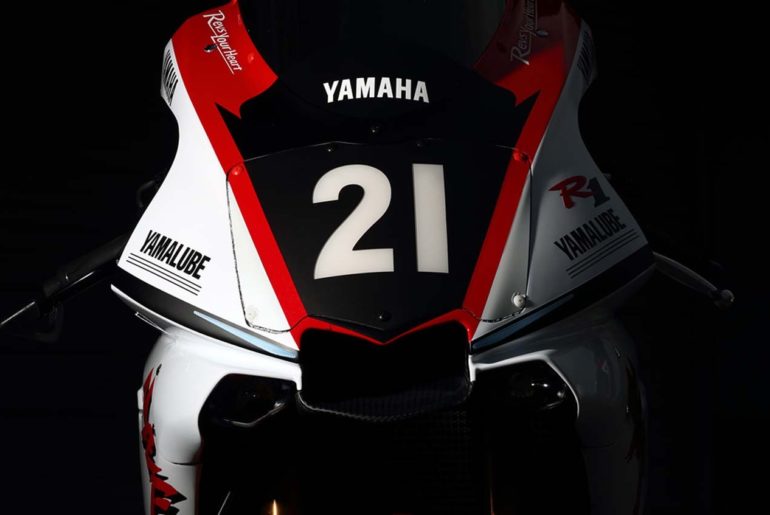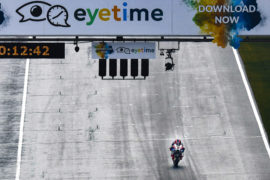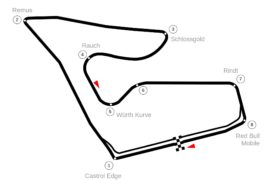This is it. This is the biggest, baddest, meanest superbike on the Suzuka 8-Hours grid. Setting the high-water mark in Japan FOUR YEARS IN A ROW now, the Yamaha YZF-R1 from the Yamaha Factory Racing Team is the pinnacle of the sport.
You may not have known it, but things didn’t quite go Yamaha’s way this year at the Suzuka 8-Hours though, with Katsuyuki Nakasuga having to sit out the race because of injury.
This left Alex Lowes and Michael van der Mark to carry the load between the two of them, a tiring job at Suzuka.
Winning by only 30 seconds in an eight-hour race is still called winning though, and in doing so the Yamaha Factory Racing Team showed the depth and talent of its team. This is a high-level, high-functioning, endurance racing outfit, and it comes straight from the factory in Iwata, Japan.
And while the Yamaha YZF-R1 is a motorcycle that you can pick up at any dealership in the United States (so long as it isn’t for a Superbike Deathmatch), the machine on the Suzuka Circuit this past weekend is anything but ordinary.
I sent our man Steve English down to the pits to get some shots of this mysterious machine, and the Japanese team was being “very Japanese” about letting us taking photos, as Steve puts it.
That didn’t stop us from getting some photos though. Go ahead, go get a towel before you continue further. We’ll wait.
If there is one common theme to the Suzuka Yamaha YZF-R1 race bike, it is carbon fiber. The Japanese brand must own stock in a composites factory, as the Suzuka 8-Hour race-winner is absolutely dripping in the stuff.
First, there is the typical bits you would expect to be made out of carbon fiber: the bodywork, various guards, a cover or two. But Yamaha takes things to a whole new level with carbon fiber switch housings, and other simple items that surely must equate to ounces saved, not pounds.
What really caught my eye though was the carbon fiber pieces on the cooling system, and I am not quite sure that I have figured them out.
Are they moulded carbon fiber pieces to replace the hoses for the radiator? That doesn’t seem likely (and a poor material choice for the job), though I would wager that there is some weight savings to be found there.
Crash protection for the engine hoses maybe? That would make more sense, and if pressed that would be the answer I would give, especially in an endurance racing environment.
But then again, this isn’t an endurance machine…it is a Suzuka machine. Any crash by the Yamaha Factory Racing Team riders during the Suzuka 8-Hours means defeat. Coming in second, third, or God forbid off the podium, is defeat in this winner-takes-all affair.
I would be curious to hear thoughts in the comments section from the mechanical experts on our site. This is a new one on me, for sure. We don’t see this kind of use for carbon fiber even in the MotoGP Championship.
Other differences from the street bike abound, but it is most interesting to see where the Suzuka 8-Hours factory Yamaha differs even from the brand’s “factory” World Superbike machine.
One such place is in the swingarm, which is beefier than the stock unit, but has a considerably less under-bracing than the WorldSBK-spec machine. There is a balancing act being done here between rigidity and weight, and the determining voice is also different.
This is because the Suzuka 8-Hours Yamaha YZF-R1 was built around the preferences of Katsuyuki Nagasuga, Yamaha’s All Japan Superbike rider and MotoGP test rider.
The Japanese rider is Yamaha’s ace in the hole at Suzuka, so it is of note not only what he wants from a machine, but also worth realizing that Yamaha is still capable of winning without him.
In terms of race partners, Yamaha has an interesting list. Of course, the Yamaha Factory Racing Team runs Bridgestone tires – if you don’t know why, read our A&R Pro story about Bridgestone and Suzuka.
Also, the Iwata factory made the interesting choice to use Kayaba (KYB) suspension. You will note an Öhlins steering damper still found its way onto the machine, though.
Both the front forks and rear shock have high-speed and low-speed settings for compression, and we can see that Yamaha made a slight preload adjustment ahead of the Suzuka 8-Hour race start – an interesting tidbit and insight into the team’s workings.
Brembo brakes complete the package, and are a more standard fitting in the Suzuka 8-Hours paddock, unlike the peculiar choice of Nissin for the factory-backed Red Bull Honda outfit. As far as I can tell, the Suzuka 8-Hour YZF-R1 uses the same braking package as the PATA Yamaha WorldSBK machine.
Take a moment to realize the throwback red and white livery that all the factory Yamaha teams used at Suzuka, giving nod to the 20 years of history being achieved by the YZF-R1 model.
The original liter bike, the R1 has changed the game, and 20 years later, it is still the bike to beat in Japan.
With the crossplane crankshaft design, and “long band” firing order, the Yamaha YZF-R1 is known as a gas-guzzler, so that has to play into the factory team’s strategy.
Where we saw the second-place finishing Red Bull Honda extending its stints, and doing two-less pit stops than the Yamaha Factory Racing Team, the tuning fork brand was able to reclaim the time lost in the pits with its time on the track.
This can only be done with outright speed, and Yamaha very much made the 2018 Suzuka 8-Hours look like a sprint race – an even more impressive feat considering the team only used two riders.
You can bet that planning for the 2019 edition of the race has already begun, perhaps in earnest back at the technical center, or maybe more casually on the back of a napkin.
But, Yamaha surely wants to make this five-in-a-row, and the boys from Iwata now have a giant target painted on their backs. Until next year, my friends.
Wide Shots: Yamaha; Close Shots: © 2018 Steve English – All Rights Reserved
Our Suzuka 8-Hours coverage is made possible by our A&R Pro members. If you like reading this unique race coverage on Asphalt & Rubber, you should consider supporting this content by signing up for A&R Pro.






























